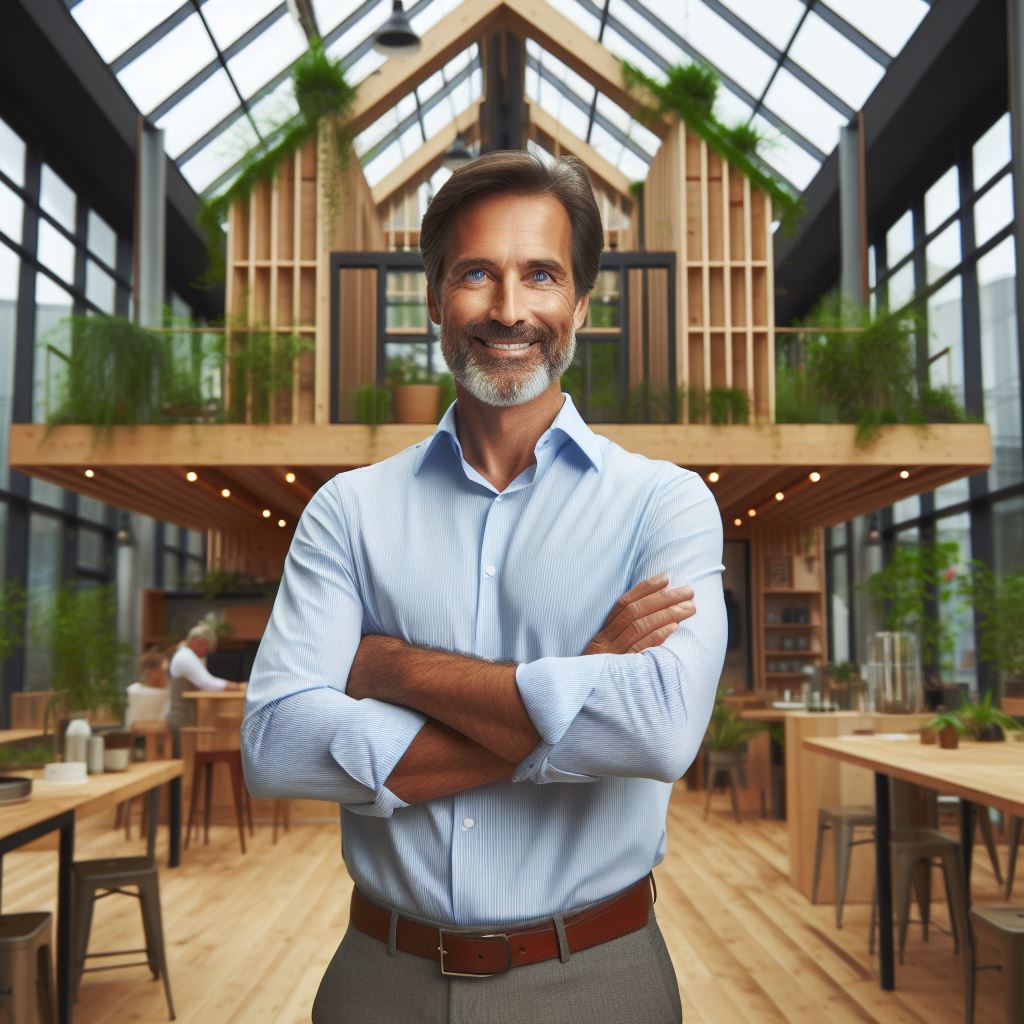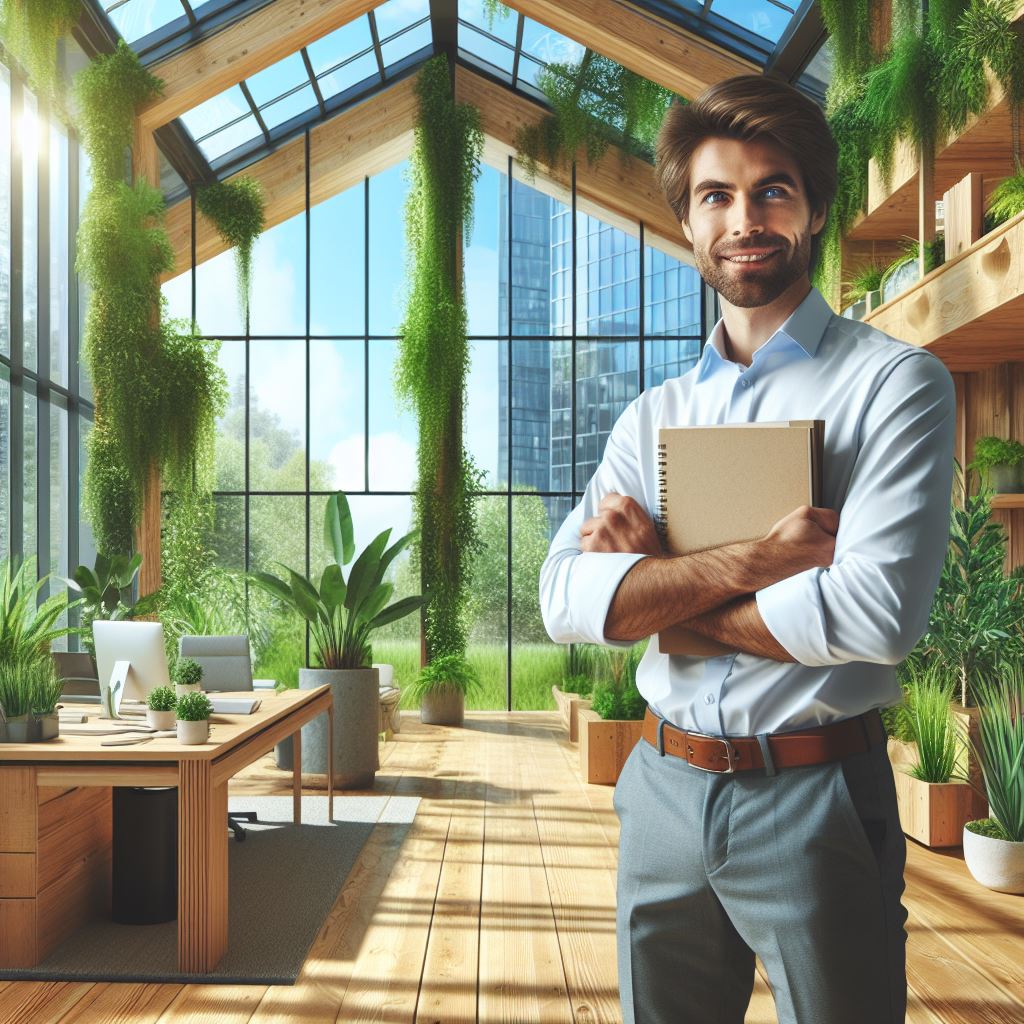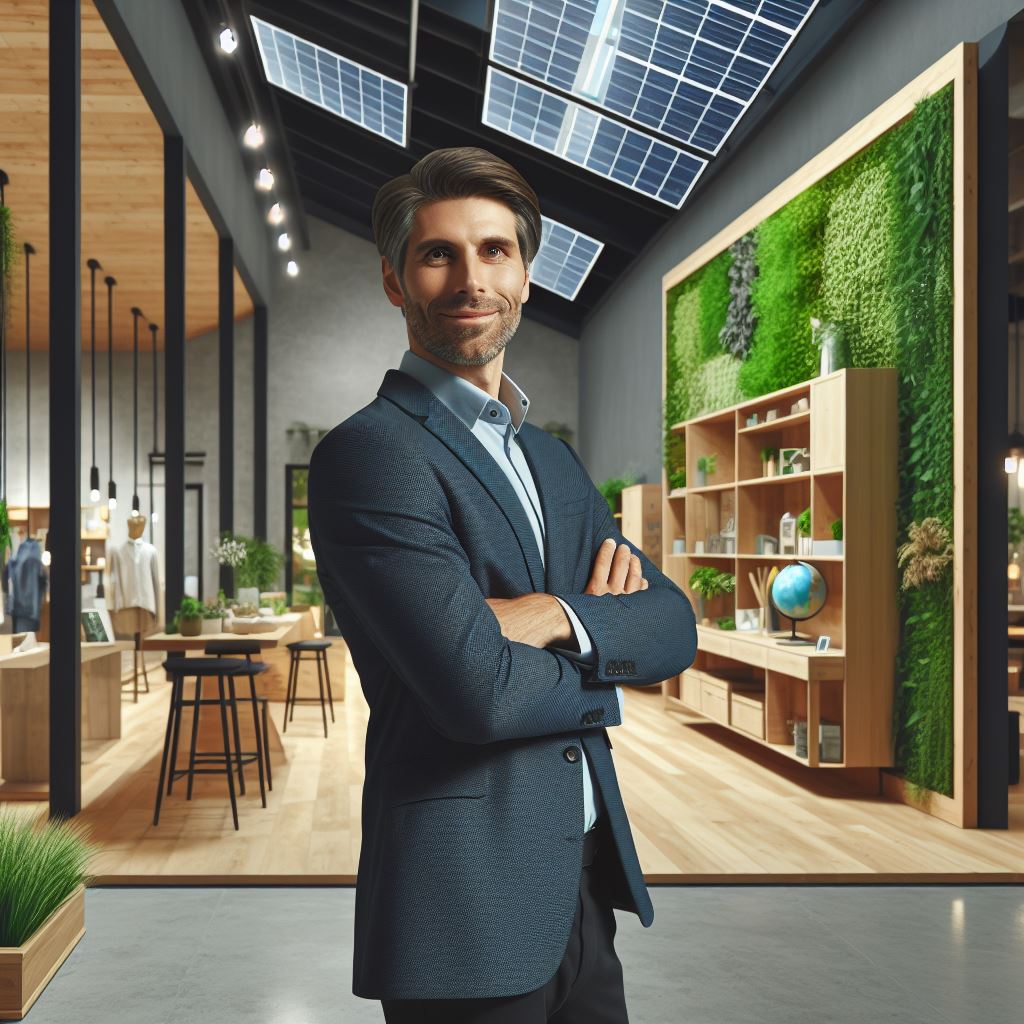Introduction
In the world of commercial real estate, green building is becoming increasingly influential.
Green building refers to the practice of creating structures that are environmentally responsible and resource-efficient.
This means incorporating sustainable materials and utilizing energy-efficient systems.
The importance of green building in commercial real estate cannot be overstated.
With growing concerns about climate change and the depletion of natural resources, there is a strong push for organizations to adopt eco-friendly practices.
Green buildings can significantly reduce energy consumption, lower operating costs, and minimize carbon emissions.
Not only do green buildings have a positive impact on the environment, but they also offer numerous benefits to tenants and investors.
These buildings provide healthier indoor air quality, natural light, and temperature regulation, improving the overall well-being and productivity of occupants.
Additionally, companies that choose to occupy green buildings often enhance their brand image, attracting socially conscious customers and employees.
As a result, the demand for green buildings in commercial real estate is on the rise.
Developers are increasingly incorporating sustainable design principles into their projects, such as installing solar panels, implementing rainwater harvesting systems, and using recycled building materials.
In fact, green building practices are revolutionizing the commercial real estate industry.
The benefits of constructing environmentally responsible structures are vast, from cost savings to improved occupant health.
The integration of green building principles is not only beneficial for the environment but also for businesses and society as a whole.
Benefits of Green Building in Commercial Real Estate
Green building practices in commercial real estate offer a range of benefits that extend beyond just environmental considerations. These benefits include:
Environmental benefits
- Reduction of greenhouse gas emissions: Green buildings help to minimize carbon emissions, thus contributing to combat climate change.
- Conservation of natural resources: By optimizing the use of resources like water and energy, green buildings promote sustainable practices.
Economic benefits
- Energy cost savings: Green buildings are designed to be energy-efficient, leading to significant reductions in energy consumption and lower utility bills for tenants.
- Increased property value: Green buildings are highly sought after, attracting tenants and investors who recognize the long-term financial benefits of sustainable properties.
Health and well-being benefits
- Improved indoor air quality: Green buildings prioritize ventilation systems and use non-toxic materials, resulting in better air quality for occupants.
- Enhanced occupant comfort: Green buildings prioritize natural light, temperature control, and acoustic management, creating a more comfortable and productive work environment.
These benefits make a compelling case for incorporating green building practices in commercial real estate.
Not only do they contribute to a healthier planet, but they also make economic sense and improve the overall well-being of occupants.
It’s no wonder that the popularity of green buildings has been on the rise in recent years.
Read: Sustainable Urban Design: US Trends in 2024
Green Building Certifications and Standards
Green Building Certifications and standards play a significant role in promoting sustainable practices in commercial real estate.
They provide guidelines and benchmarks for developers and builders to follow when designing and constructing green buildings.
These certifications and standards ensure that sustainable practices are implemented, resulting in energy-efficient, environmentally friendly, and healthy buildings.
Here are some widely recognized green building certifications and standards:
LEED (Leadership in Energy and Environmental Design)
LEED is one of the most widely recognized and used green building certifications globally.
It provides a framework for building design, construction, operation, and maintenance that focuses on aspects such as energy efficiency, water conservation, waste management, and indoor environmental quality.
LEED certification is awarded based on points earned in various categories, including sustainable sites, water efficiency, energy and atmosphere, materials and resources, and indoor environmental quality.
BREEAM (Building Research Establishment Environmental Assessment Method)
BREEAM is another internationally recognized green building certification.
It assesses the sustainability performance of buildings in several categories, including energy, health and well-being, pollution, transport, materials, waste, and land use.
BREEAM provides developers with a comprehensive assessment of the environmental impacts of their buildings and offers suggestions for improvement.
WELL Building Standard
The WELL Building Standard focuses on enhancing the health and well-being of building occupants.
It addresses various aspects such as air quality, water quality, lighting, thermal comfort, acoustics, and ergonomic design.
The WELL certification is awarded based on performance requirements in these categories.
By prioritizing the health and well-being of occupants, the WELL Building Standard contributes to creating a productive and healthy work environment.
Living Building Challenge
The Living Building Challenge is an advanced green building certification that aims to create buildings that function as self-sufficient, regenerative systems.
It focuses not only on energy efficiency and environmental impact but also on social equity and the building’s interaction with its surroundings.
To achieve certification, a building must meet rigorous criteria related to energy, water, materials, equity, beauty, and health.
These certifications and standards drive innovation and encourage the adoption of sustainable practices in commercial real estate.
They provide a clear roadmap for developers and architects to follow and create buildings that are not only environmentally responsible but also economically viable.
Green building certifications also offer various benefits, including:
- Increased marketability: Green certified buildings attract environmentally conscious tenants who value sustainable practices.
- Energy and cost savings: Green buildings are designed to be energy-efficient, leading to reduced utility costs for owners and tenants.
- Improved indoor environmental quality: Green buildings prioritize occupant health and well-being, resulting in increased productivity and satisfaction.
- Reduced environmental impact: Green buildings minimize their carbon footprint by utilizing renewable energy, conserving water, and using eco-friendly materials.
- Compliance with regulations: Green building certifications ensure compliance with local and national regulations related to sustainability and environmental responsibility.
In essence, green building certifications and standards play a critical role in promoting sustainability in commercial real estate.
LEED, BREEAM, WELL Building Standard, and Living Building Challenge are just a few examples of certifications and standards that developers and builders can use to create environmentally friendly and energy-efficient buildings.
By embracing these certifications, the commercial real estate industry can contribute to a greener and more sustainable future.
Read: Robotics in Construction: Changing US Industries

Key Green Building Trends in Commercial Real Estate
Commercial real estate is seeing a rise in green building trends, as more businesses recognize the importance of sustainability and energy efficiency.
These trends are shaping the future of commercial buildings and transforming the industry.
Let’s take a closer look at some key trends:
Energy-efficient design and materials
One of the primary focuses in green building is to reduce energy consumption.
This is achieved through the use of renewable energy sources, such as solar panels or wind turbines, to power the building.
Additionally, energy-efficient lighting systems, like LED lights, are being installed to minimize energy waste.
Water conservation measures
Incorporating water conservation practices is another important trend in green building.
Rainwater is being collected and reused for landscaping or other non-potable purposes through rainwater harvesting systems.
Furthermore, low-flow plumbing fixtures, such as faucets and toilets, are being installed to minimize water usage and wastage.
Sustainable site development
Sustainable site development involves designing and constructing buildings in a way that minimizes the impact on the surrounding environment.
This includes using natural landscaping techniques to reduce water usage and promote biodiversity.
Moreover, developers are prioritizing the protection and restoration of ecosystems to preserve the local flora and fauna.
Indoor environmental quality optimization
Creating a healthy and comfortable indoor environment is crucial for the well-being of building occupants.
Green buildings are incorporating features like natural daylighting, which reduces the need for artificial lighting and improves occupant mood and productivity.
Additionally, enhanced thermal comfort systems are being implemented to maintain optimal temperature levels without excessive energy consumption.
Waste reduction and recycling initiatives
Minimizing waste generation and promoting recycling are essential components of green building.
Construction waste management strategies are being implemented to reduce the amount of waste sent to landfills during the building process.
Furthermore, recycling programs are being established within commercial buildings to encourage proper waste segregation and recycling efforts.
Overall, these key green building trends are revolutionizing the commercial real estate sector.
Businesses are realizing the benefits of investing in sustainable buildings, not only from an environmental perspective but also in terms of cost savings and long-term value.
With continuous advancements in green technologies and growing awareness about sustainability, the future of commercial real estate looks promising.
Read: Chicago’s 2024 Commercial Property Boom Explained
Case Studies of Successful Green Building Projects in Commercial Real Estate
In the ever-evolving landscape of commercial real estate, sustainable and eco-friendly construction practices have become pivotal.
Examining successful green building projects across various regions sheds light on the transformative impact of environmentally conscious design and construction.
Here, we delve into three inspiring case studies, each representing a different region – East Coast, West Coast, and Midwest.
East Coast: The Edge Tower, New York City
Situated in the heart of Manhattan, The Edge Tower stands as a beacon of sustainable urban development.
This residential-commercial hybrid marvel boasts an integrated energy-efficient HVAC system, harnessing geothermal and solar power.
The building’s façade incorporates greenery, not only providing aesthetic appeal but also aiding in natural insulation.
Its rooftop garden minimizes the urban heat island effect, creating a cooler microclimate.
The Edge Tower epitomizes the marriage of functionality and sustainability, redefining luxury living in the city that never sleeps.
West Coast: Salesforce Tower, San Francisco
In the tech-driven landscape of Silicon Valley, the Salesforce Tower has emerged as a symbol of innovation in green building.
This LEED Platinum certified skyscraper utilizes advanced water recycling systems, reducing water consumption by 30%. Smart sensors adjust lighting and temperature based on occupancy, optimizing energy usage.
The tower’s commitment to sustainable materials and construction practices showcases how cutting-edge technology can coexist with environmental responsibility, setting a precedent for future urban development in the West Coast.
Midwest: The SustainaHub, Chicago
Nestled in the heart of Chicago, The SustainaHub is a pioneering example of sustainable development in the Midwest.
This mixed-use complex prioritizes energy efficiency through its passive design, utilizing natural ventilation and maximizing daylight exposure.
The incorporation of rainwater harvesting systems and extensive green spaces highlights a commitment to reducing environmental impact.
The SustainaHub is not just a building; it’s a sustainable ecosystem that harmonizes with its surroundings, proving that the Midwest can lead the charge in eco-conscious real estate.
These case studies underscore the versatility of green building practices, offering valuable insights for future projects.
As commercial real estate continues to evolve, embracing sustainability remains not only a responsible choice but a strategic one, enhancing property value and promoting a healthier, more resilient future.
Read: Warehouse Investments: The 2024 Boom Explained
Challenges and Barriers to Green Building in Commercial Real Estate
Despite the numerous benefits of green building in commercial real estate, there are several challenges and barriers that hinder its widespread adoption.
High Initial Costs
One of the major challenges in implementing green building practices is the high initial costs involved.
Green building materials, technologies, and certifications often come with a higher price tag compared to traditional methods.
However, it is important to consider that the long-term savings generated from reduced energy consumption and operational costs can outweigh the initial investment.
Lack of Awareness and Education
A lack of awareness and education about the benefits and cost-effectiveness of green building practices can serve as a barrier to its implementation.
Many commercial real estate stakeholders are still unaware of the positive impact sustainable buildings can have on their bottom line.
Efforts should be made to educate developers, investors, and tenants about the long-term benefits, such as energy and water savings, improved occupant health and productivity, and enhanced marketability.
Resistance to Change from Traditional Methods
The inertia of sticking to traditional construction and design practices can pose a significant barrier to the adoption of green building in the commercial real estate sector.
Developers and contractors may be hesitant to change their familiar processes and take on the perceived risks associated with sustainable construction.
Building codes and regulations can play a crucial role in overcoming this resistance by incentivizing or mandating green building practices.
Governments and industry organizations also need to actively promote the advantages of sustainable buildings to encourage a shift in mindset.
Limited Availability of Green Building Materials and Technologies
Another challenge faced by commercial real estate developers is the limited availability of green building materials and technologies.
Supply chain constraints and a lack of market demand contribute to the scarcity of sustainable options.
However, as green building gains momentum, the industry is responding with increased production and availability of eco-friendly materials and technologies.
Innovations in manufacturing processes and collaboration between suppliers, architects, and developers are driving market expansion.
The Challenges and Overcoming Barriers
To address the challenges and overcome barriers to green building in commercial real estate, industry stakeholders should focus on the following strategies:
- Financial incentives: Government incentives, tax credits, and subsidies can help offset the initial cost barrier and encourage widespread adoption of sustainable building practices.
- Educational programs: Increased education and awareness campaigns should be conducted to promote the long-term benefits and return on investment of green building.
- Policy changes: Governments should implement building codes and regulations that require sustainable building practices, making it the standard rather than the exception.
- Industry collaboration: Collaboration between developers, architects, contractors, and suppliers is essential to drive innovation, improve availability, and reduce costs of green building materials and technologies.
- Certifications and rating systems: Continued development and promotion of certification programs, such as LEED (Leadership in Energy and Environmental Design), can encourage developers to pursue sustainable building practices and improve marketability.
By addressing these challenges and barriers, the commercial real estate industry can unlock the full potential of green building, benefiting not only the environment but also the bottom line of businesses and the well-being of occupants.
Conclusion
The importance and benefits of green building in commercial real estate cannot be overstated.
Green buildings are not only environmentally friendly but also economically advantageous.
They offer reduced energy consumption, lower operating costs, and enhanced occupant health and productivity.
It is crucial for stakeholders in the industry to embrace sustainability and green practices.
By adopting green building standards and implementing eco-friendly strategies, real estate professionals can contribute to the overall well-being of the environment and society as a whole.
Green building trends in commercial real estate are on the rise, and it is essential for all stakeholders, including developers, investors, and tenants, to recognize the positive impact of sustainable practices.
Embracing green building not only helps to protect the environment but also provides long-term financial benefits and enhances the overall quality of the built environment.
As the demand for green buildings continues to grow, stakeholders should actively participate in creating a built environment that is sustainable, energy-efficient, and environmentally responsible.
By doing so, we can contribute to a greener future and leave a positive legacy for generations to come.




